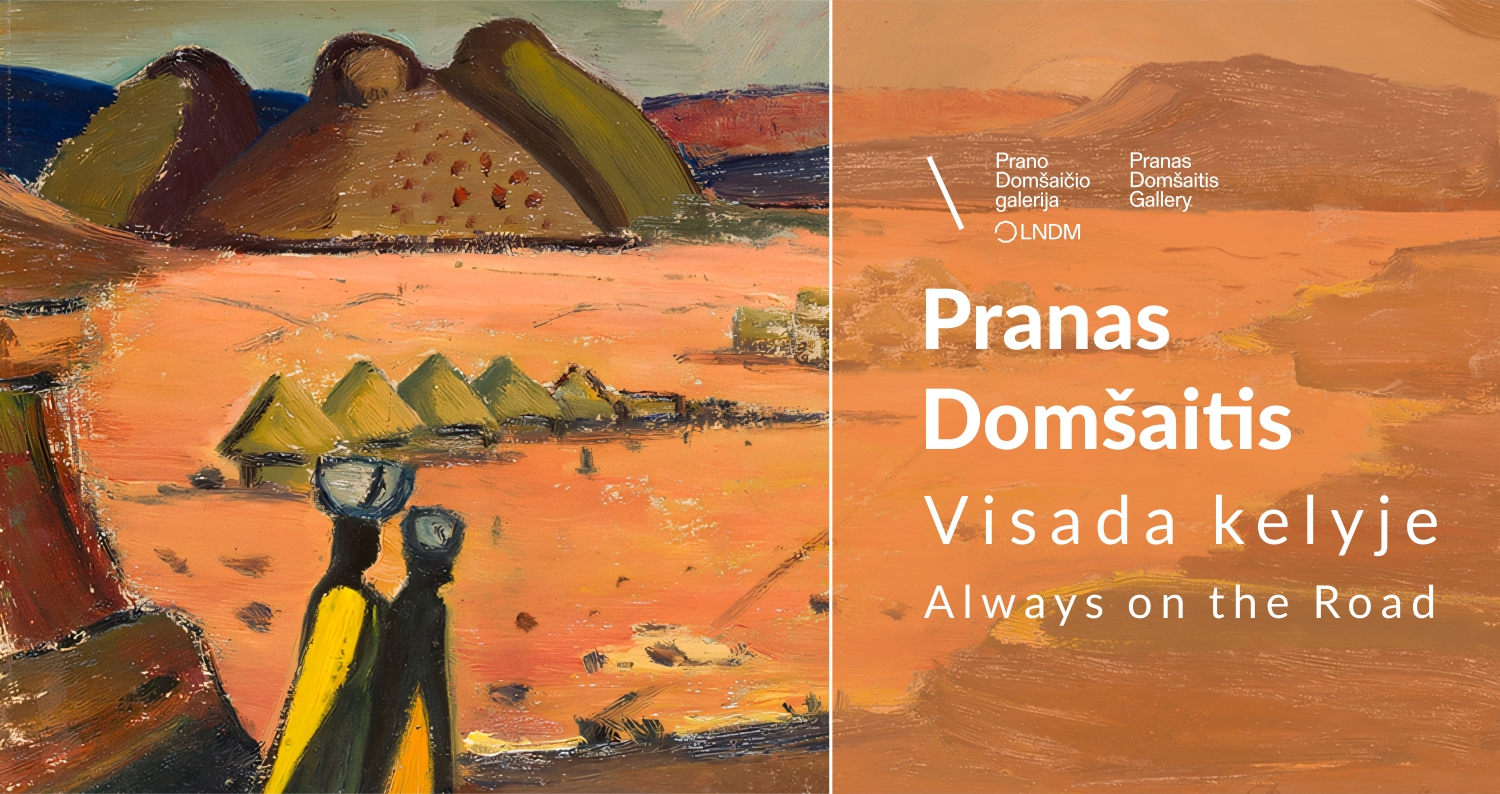Pranas Domšaitis. Always on the Road
The renewed display brings the content closer to contemporary visitors
The visitors to Pranas Domšaitis Gallery will be able to see around two hundred of the artist’s pieces: oil paintings, water colours and pastel works, drawings, embroidery compositions and two-side pictures set in special structures. The display is organized both chronologically and thematically.
Visitor-experience in the gallery will be heightened by contemporary approach to museum space.
‘The renewed exhibition of Domšaitis is enhanced by the integrated multimedia elements tailored to visitors in different age groups and of different experience. The museum seeks to create innovative products of lasting value as facilitators bringing the content nearer to contemporary visitors and leading into a deeper acquaintance with the art by Pranas Domšaitis. That will also add to the museum’s attractivity and inclusivity, the accessibility and dissemination of its content,’ Skaistė Marčienė, director of Pranas Domšaitis Gallery elaborates on their new solutions.
Over six hundred art pieces by Domšaitis were gifted to Lithuania by the Lithuanian Foundation operating in the US, which acquired the works from the artist’s widow, Adelheid Armhold. Thanks to the joint efforts of the organization and museum curators, the biggest part of the painter’s legacy is preserved at the LNMA. Since 2001, a part of his work is on permanent display in Klaipėda, in close proximity to the painter’s childhood’s home.
Born in Kruopynai, a small village in East Prussia (now Kaliningrad Region, Gayevo), the painter Pranas Domšaitis (1880 – 1965) is one of the most acclaimed representatives of the Lithuanian exile art. In 1907 – 1910, he studied painting at the Konigsberg Art Academy. His art was influenced by 20th-century European modern art and the dominant contemporary trends. In Germany, alongside with the popular at the time Impressionism, a new movement of Expressionism was taking shape. The budding artist was moulded through interactions with the established artists of the time. Already in 1914, Domšaitis visited Edward Munch, painter and graphic artist, and the trailblazer of Expressionism.
In Germany Domšaitis was famed as a creator of expressionistic landscapes and biblical compositions. He received substantial coverage by the cultural press, and his works were acquired by the National Gallery in Berlin, museums in Königsberg, Lübeck, Szczecin, and by private collectors. Petras Domšaitis exhibited in group shows alongside such celebrities of German art as Hermann Max Pechstein, Otto Dix, Ernst Ludwig Kirchner and others.
‘The artist left for us a myth, an unusual, but also a wondrous world of dreams,’ these words by Telesforas Valius, an émigré graphic artist, epitomize the creative legacy of Pranas Domšaitis.
The internationally acclaimed artist Pranas Domšaitis: Lithuanian blood does not lie
With the German National Socialist Party’s rise to power in 1933, the altered political course influenced also the artists in Germany. The new government perceived modern art as worthless. The artwork by the Modernists was banned from the museum displays and moved over to the so-called Degenerate Art Exhibitions, which showed examples of unacceptable art.
Domšaitis, who was nourished by two cultures, German and Lithuanian, and established himself on the international art stage, would always emphasize his roots, saying: ‘Lithuanian blood does not lie, just like my pictures do not. They are Lithuanian for real.’ In 1920, in Kaunas the painter received a passport of the Republic of Lithuania, while around 1938, he started signing his work as ‘Domsaitis’, using a Lithuanian equivalent of his name.
In post-war Austria he met Lithuanian émigré artists and took part in the international war refugee exhibitions, for the first part, as a Lithuanian artist. The ties with the émigré community established here were to last for a life-time. In 1949, the artist, with his wife Adelheid Armhold left for South Africa. They settled in Cape Town where he soon was integrated into the local cultural life. He gave solo shows, represented the country at the San Paolo Biennial. In 1946, he won the South African Prize of the Artist of Fame and Promise.
Pranas Domšaitis Gallery invites its visitors on a journey
‘The artist had once said that he “is always on the road”, referring to his constant changes of place and his creative explorations. As a curator working on a new display of Domšaitis’ art, I also felt like on a journey, exploring his biography and making selection of the artwork to go on show. I invite everyone to hit the road of familiarization with the painter’s art and with Domšaitis as an individual, a personality highly colourful and dedicated to art,’ Dr Aušra Trakšelytė shares her experience of curating the new exhibition.
Visitors to the renewed exhibition at the gallery will see the early work by the painter, the landscapes of Pomorze, Bavaria, Austria, of southern countries, colourful flower compositions, still lifes, portraits of the people of different countries and views of their everyday life, biblical scenes rendered in medieval mystical atmosphere, together with the most mature and powerful work of his late years.
The expanded new exhibition invites you and promises ‘a magical opening of reality’ to quote Pranas Domšaitis himself.
Exhibition curator: Dr Aušra Trakšelytė
Exhibition architect: Vladas Balsys
Graphic designer: Laura Grigaliūnaitė
Coordinators: Skaistė Marčienė, Aurelija Malinauskaitė
Lithuanian language proofreader: Laura Patiomkinaitė-Čeikė
English language translator: Aleksandra Fominaitė
Audio-guide text writer: Algė Gudaitytė
Media partners:


Project financed by

- Purchase an e-ticket for this exhibition
- Book a guided tour of this exhibition by phone +370 46 410 421, email domsaicio.edukacija@lndm.lt
- Plan your visit to the Pranas Domšaitis Gallery
33 Liepu st, LT-92145, Klaipėda, Lithuania
++370 46 410 412
domsaicio.galerija@lndm.lt














